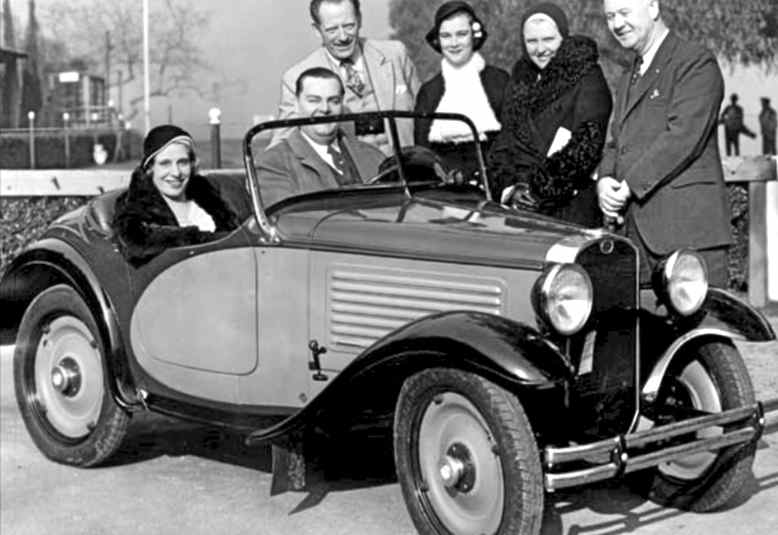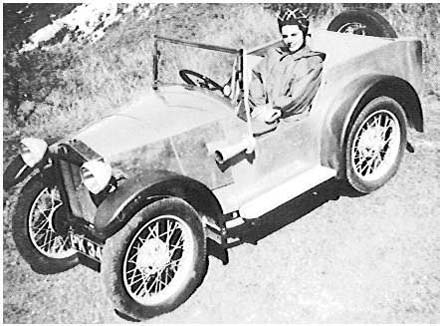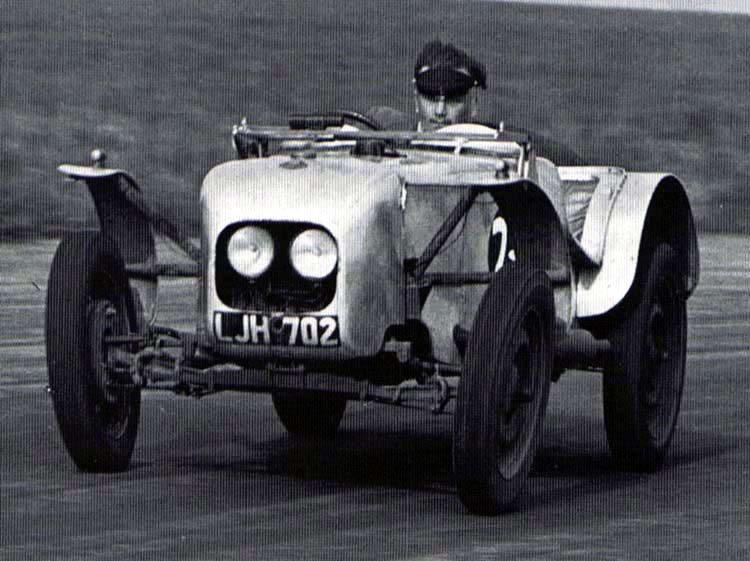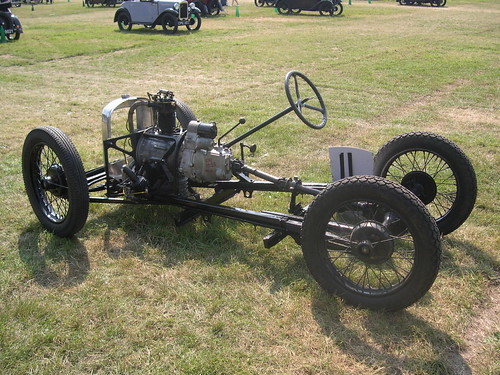Since getting interested in Sevens, I?ve done quite a bit of reading and I thought I?d collate some of that into a useful post for those of you not familiar with the little cars, their very famous drivers and the huge impact on the history of the automobile.
The Seven was introduced in 1922 as a car for the British every-man, a family vehicle for a very reasonable price, with the practicality of a car, but the price of a cyclecar. It worked very well too, and within a few years had killed off the British cyclecar market, and swayed over countless people from motorcycles into car ownership. It also saved Austin, whose larger more luxurious cars were lagging in sales in a growing austere market. An interesting note is that Herbert Austin penned the car himself, and had to press the company board to get the car into production.

As the Top Gear piece with Clarkson and May exploring pedal layouts showed, the ?Baby Austin? uses the familiar three pedal layout. An A-Frame chassis holds a 747cc engine mounted directly to it, followed by a three-speed crash gearbox. Front and rear cable brakes took care of stopping, and were initially separate with the hand brake doing the front end, and the pedal the other. These were later linked. (My special has them linked).
The Seven was used in a specialised form by Austin themselves to enter some races in 1923, and through the 1920s a number of different companies produced their own bodies for the chassis and running gear which Austin sold separately to them. The most famous of these are probably the Gordon England models.
Of note to the British car industry, is the Austin Seven Swallow. Introduced in 1927, these cars were the brainchild of William Lyons and the Swallow Sidecar company. The cars were restyled and given plusher interiors, and the success of these models led to Lyons introducing their own cars under the SS brand, the forerunner to Jaguar.
The EA Sports models, nicknamed Ulster after the Ulster TT success the works team had in 1929, are probably the most admired sporting 7s produced. A batch of works cars was followed by production runs for the public, and these sleek boat tailed cars saw success in the hands of many gentleman racers. Two models existed, blown and unblown. The blower was a Cozette and gave the car a considerable boost of urgency.


The Seven changed quite a bit through the 30s, and the Ulsters were dropped for the more conventional Nippy and Speedy sports models. Saloons became larger, and eventually the re-designed Ruby came out to counter the newer Morris 8 and Ford Y. The Seven stopped production 1938 after selling nearly 290,000. The basis of the Seven was exported to many countries, and saw success in France as the Rosengart LR4, and Germany as the Dixi. Dixi were later bought by BMW and the Seven continued production there under license. The American Austin company marketed the car as a Bantam in a range of styles, and even Datsun produced a car which while not licensed, had an awful lot of similarity to the Austin.


Post-war the cars were cheap and offered a great basis for budget motorsport, with an easily tuneable engine and chassis giving plenty of potential. The 750 motorclub for cars of 850cc and less took off (of which the previous owner of my car was an important early member), and the production of Austin Seven specials really took off. In the early post-war days of the 750 club, Colin Chapman could be seen driving his Seven special (later named the Lotus Mark 1), with Graham Hill acting as his bouncer on trials! Chapman took the Seven and made a very successful trials car, and later continued his Seven development with the Lotus Mark 2, 3 and 4 which were successful racers in the summer, and trials cars in the winter. All 750 club cars, and all to some degree Austin Seven based.


At a similar time in New Zealand, Bruce McLaren was rebuilding an old Seven in the style of an Ulster with his father. Completing the car when he was 13, Bruce learned to drive in it. At 15 while his father was ill, Bruce entered the car in a race by himself, and won. The young McLaren learned how to get the most out of the Seven, and had even painted on the speedometer at which speeds to change gear.
This is just a little bit of the Seven story off the top of my head, but it?s a long and varied one with many of the greatest names in British motorsport and engineering taking Sevens and making them something special. The prior owner of my car worked for the Vanwall F1 team off the back of his 750 club Austin Seven exploits in the early post-war period, and was a friend of Chapman?s.


 ... imagine those beers having leaves and mud in them :lol:
... imagine those beers having leaves and mud in them :lol:




 a
a











